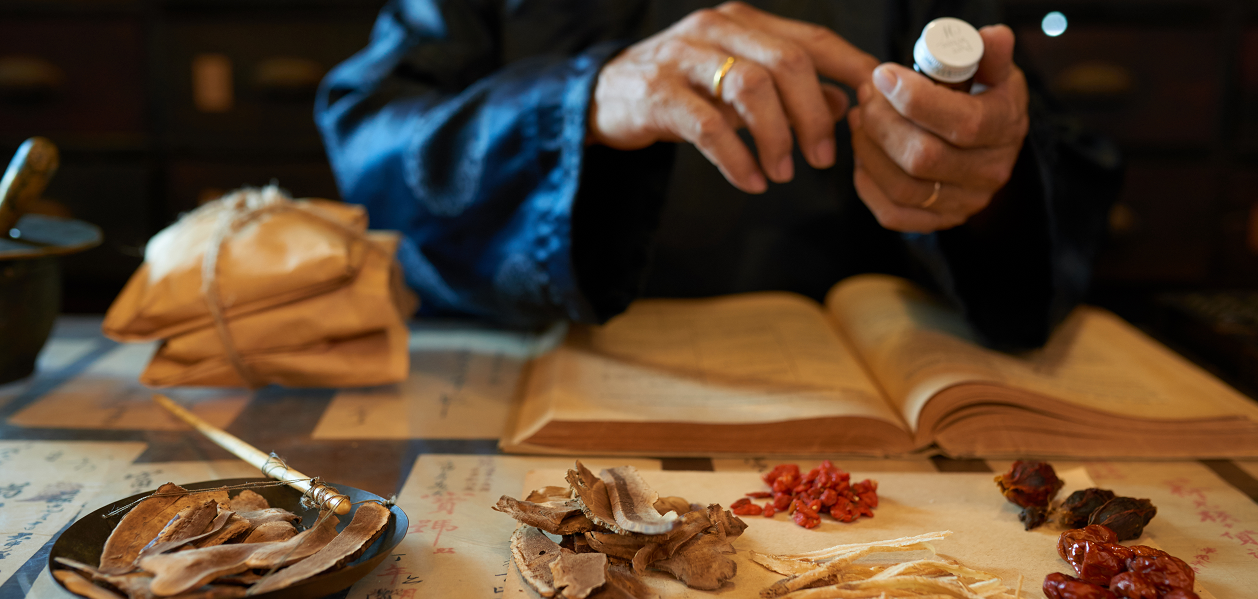Taking herbal remedies to the lab
As experts pursue evidence-based research and develop regulatory standards, traditional herbal medicine moves towards more mainstream clinical use.
Amid the data-driven nature of today’s clinical practice, herbal medicine is typically seen as outdated—like old wives’ tales that lack scientific basis. However, as wellness and wellbeing continue to gain popularity and interest from around the world, these traditional interventions may have a place in modern medicine as much as novel drugs do.
Health experts across Asia are paying closer attention to traditional medicine as a valuable form of disease treatment and an effective preventive strategy and have begun uncovering scientific evidence to evaluate traditional and cultural knowledge. In Singapore, there are over 2,000 active Traditional Chinese Medicine (TCM) practitioners, with several local hospitals now delivering TCM therapies alongside Western treatments.
At IPI’s TechInnovation 2021 conference, leaders in the field across the region discussed trends, opportunities and clinical support for the further development of traditional medicine.
Building an evidence base for traditional medicine
As one of the oldest systems of medicine, TCM has been practiced in East Asia for more than 2,000 years, with practitioners trying out numerous herbs to observe their beneficial or adverse effects. Despite TCM’s long history, the first-ever publication of a randomised controlled trial—the gold standard for evaluating treatment effectiveness—only took place in 1982.
For Prof Bian Zhaoxiang, Associate Vice President of Hong Kong Baptist University (HKBU), publication is vital to fostering an evidence-based approach to TCM. “Chinese medicine research is very important for traditional wisdom to be part of clinical practice guidelines,” he said.
Similar to how pharmaceutical drugs undergo several stages of rigorous testing, herbal medicine also needs to be vetted based on these scientific standards. Prof Bian also noted that contemporary TCM research must consider how other interventions, especially Western medicine, interact with traditional medicine to impact patient responses.
By assessing the effectiveness of TCM products on different diseases and patient demographics, these studies pave the way for pinpointing the benefits of existing traditional medicines and the development of new medications.
Taking a preventive approach
Particularly relevant in the wake of the COVID-19 pandemic, consumers are intensifying their search for complementary health products like traditional herbal medicine and health supplements. In Asia, this industry currently has a market size of US$400 billion, highlighted Dr Edmund Tian of Temasek Polytechnic.
With this growing consumer interest, multinational corporations are moving into the traditional medicine space through partnerships and acquisitions. “Many ambitious start-ups have now also entered this sector,” Dr Tian added.
As the industry continues to expand, consumers are keeping an eye out for clear evidence that these herbal medicine products truly work. “Consumers have moved from a curative mindset to a preventive approach. They are getting supplements to enhance their health before they get sick,” explained Jacob Cheong, Head of Group Product Development and Management at local TCM company Eu Yan Sang.
From cell culture tests to human trials, Dr Tian shared that various research endeavours showcase the safety and effectiveness of these traditional medicines. By screening for compounds with healthful properties and developing proprietary herbal formulations, these science-backed efforts will enable companies to stay competitive in a growing TCM industry.
Standardising TCM to maximise benefits
Before TCM can be used in the clinic, standardisation and regulation are essential in assuring that these products deliver the intended health benefits. But even with the most effective herbs, gaining regulatory approval is easier said than done.
The sheer variety of herbal medicine products makes standardisation difficult to achieve, given that such traditional knowledge takes root in several different cultures.
“Evidence is important but it’s not enough,” said Prof Lyu Aiping, Dean of HKBU’s School of Chinese Medicine. “There is a need to harmonise different partners and stakeholders to bring traditional medicine into clinical practice.”
China, for example, has put in place clinical practice guidelines for acupuncture versus herbal formulations, together with those for different medical fields, including paediatrics and surgery. This could spur the development of national and regional standards to help regulate TCM products, which Prof Lyu noted would bring down costs by simplifying diagnostic and therapeutic procedures.
Through these efforts to supply evidence and incorporate regulatory systems, the traditional herbal medicine sector is bound to grow and become more mainstream. By combining modern science and technology with traditional and cultural strategies, the medical landscape is equipped with a more holistic approach, poised to enhance community health and well-being.
To find out more about innovative and evidence-based traditional herbal medicines, check out the technologies presented at TechInnovation 2021.

